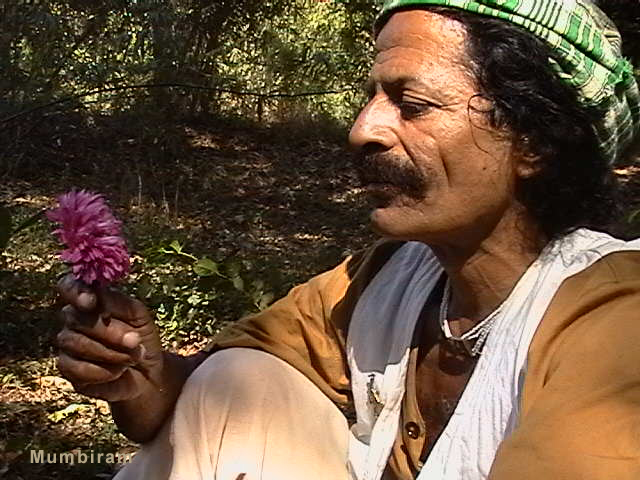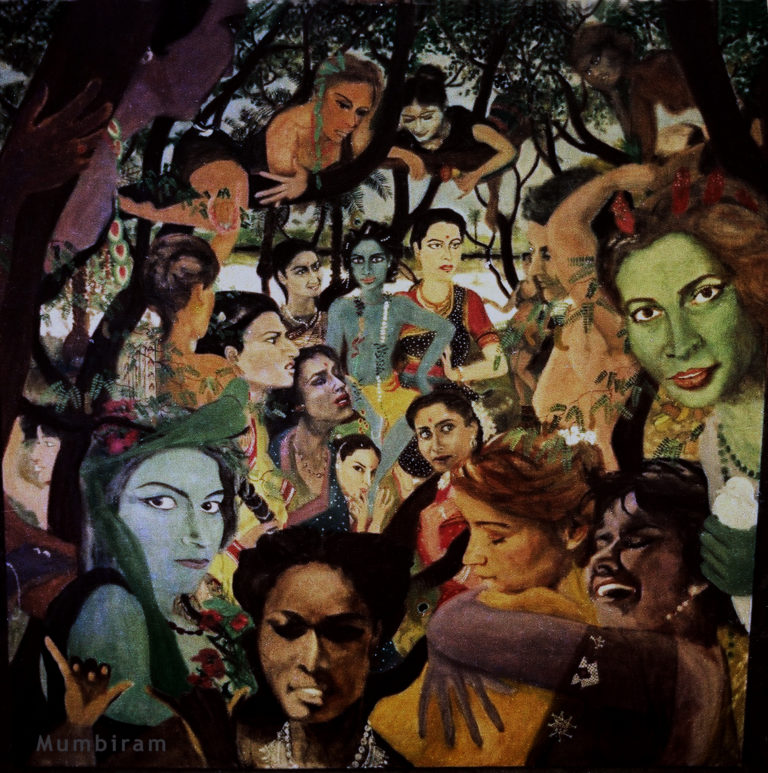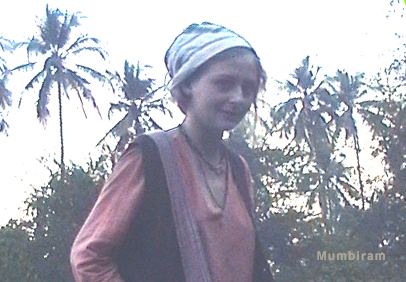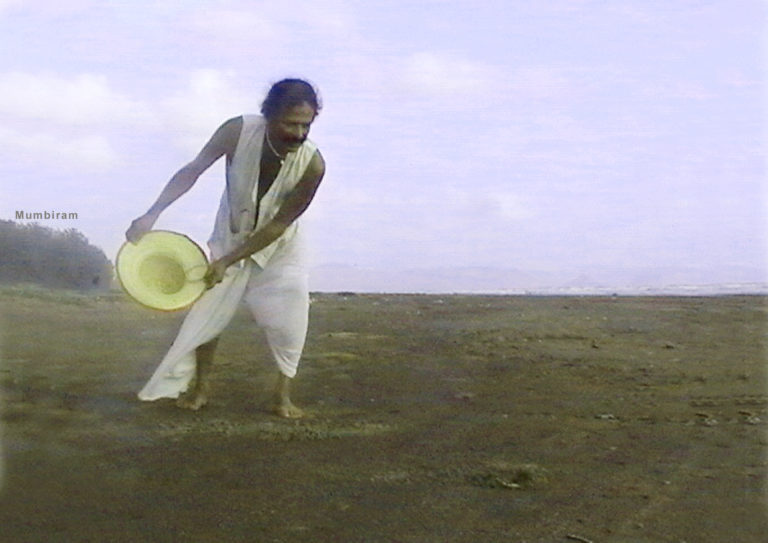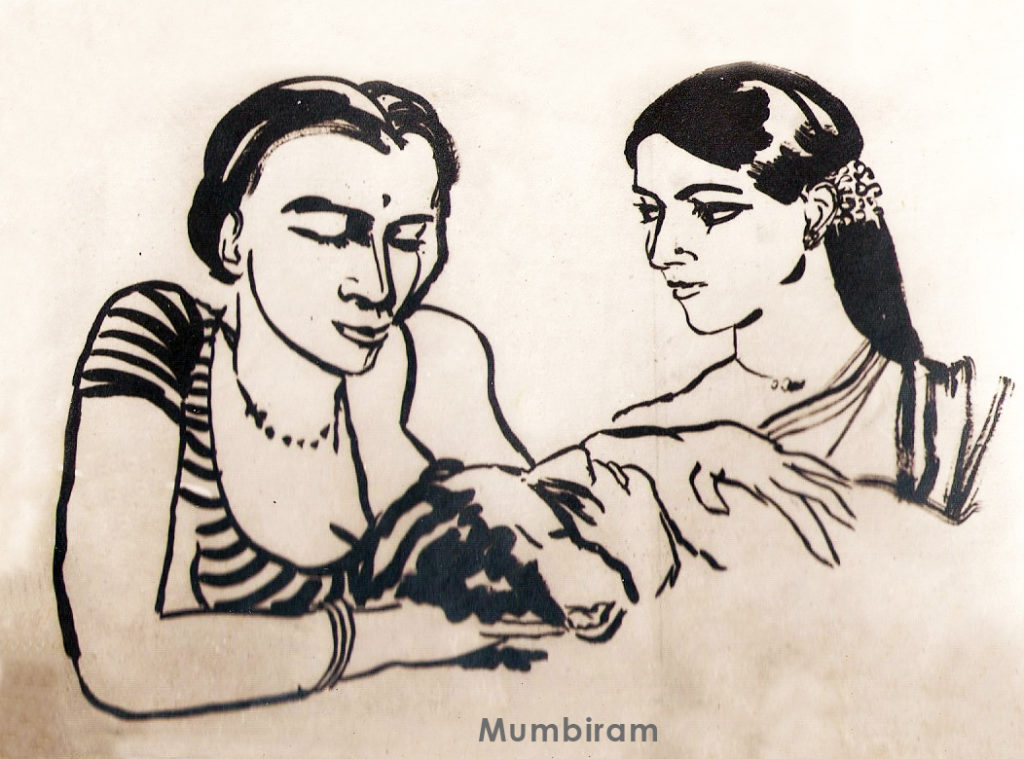
Mumbiram made this exquisite ink and brush rendering in the 80’s when he was making screen prints of such monochrome renderings. It is exquisite because through versatile use of a single brush the artist has depicted two women friends of the dead artist whom we see in the foreground. The sari clad woman on the right is looking at the woman who is caressing the dead man’s head. Both women are handsome in a distinct unique way. The viewer’s imagination is allowed to take wings speculating about the many possible ways the two may be involved in the artist’s life.
This is a screen-print in black ink on off-white rag-content hand-made paper produced in the famous Hand Paper Institute of Pune.
We are going to narrate how and why Mumbiram was inspired to inscribe on another print of this same rendering some lines of a poem by poet Lok Kavi Manmohan.
Not long after Mumbiram was back from America, once Shirubhau Limaye (the notorious freedom fighter) asked Mumbiram if he would like to come along to see poet Manmohan. Manmohan who ? Mumbiram was not interested. He did wonder why Shirubhau should be interested in this poet Manmohan.
Did Mumbiram really not know about Poet Manmohan? Well, yes and no.
You see, earlier in his poetic career Manmohan had written some wonderful songs that had become all-time hits especially with young women. Some of these were:
मैत्रिणीनो सांगू नका नांव घ्यायला ! (Dear Girls, don’t ask me the name of my Beloved)
or
कसा ग बाई झाला राधे तुझा सैल अंबाडा ? (Radhe, how come your hair is dishevelled ?)
These songs had evergreen popularity on mid-noon radio programmes made especially for women who stayed home. Mumbiram was aware of these songs. Everyone was. These songs were so ubiquitous that they could have been of folk origin. Nobody cared to know who wrote them.
Manmohan became famous as a rebel poet in his later life and consequently unpopular with the Marathi literary establishment. Mumbiram came to know Manmohan’s famous one-liners some time later. How and when we do not know.
राजकवींना थोबाडाया लोककवी मी झालो आहे
I have become “People’s Poet”
To slap all Poet Laureates !
Manmohan had taken on the title “Lok Kavi” or “People’s Poet” for himself.
Mumbiram came to know even much later that this firebrand rebel Manmohan was the writer of those songs on radio that oozed kitsch sentimentality.
We suspect it was about this time that Mumbiram came across some lines of Manmohan that he found very precious.
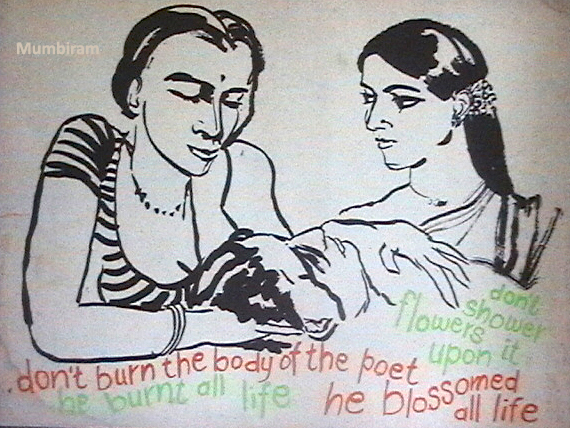
Here we have another print of “Two Friends of the Departed Artist” on which Mumbiram has painted with a brush two lines of this poem by Manmohan. In Marathi these lines were:
शव हे कवीचे जाळु नका हो ! जन्मभरी तो जळतचि होता !!
फुले तयावर उधळू नका हो ! जन्मभरी तो फुलतचि होता !!
Mumbiram translated these lines into English as:
Please don’t burn the body of the Poet !
He was burning all his Life !!
Please don’t shower flowers upon it !
He was blossoming all his Life !!
It was Tatya Aitawadekar who took Mumbiram to meet the eccentric rebel poet in the twilight days of his life.
It was Tatya who knew where Poet Manmohan was residing at the base of an apartment building not far from his Grafina Studio near Peru Gate in Sadashiv Peth. Tatya had seen almost all artworks that Mumbiram screen-printed. He did the process photography for each one of them and never charged a penny. So Tatya had seen this screen print. Mumbiram had then titled it “Mumbiramcha Mrityu” (Death of Mumbiram). Tatya insisted that Mumbiram meets Poet Manmohan. Mumbiram agreed and accompanied Tatya to a makeshift residence at the bottom of an apartment complex. Manmohan was bed ridden but lively. He was passing time making countless number of A4 size water-colour paintings of blobs of colour on the paper.
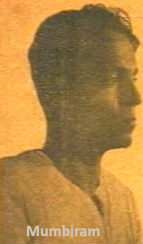
This is the only available photo (right) of Manmohan.

